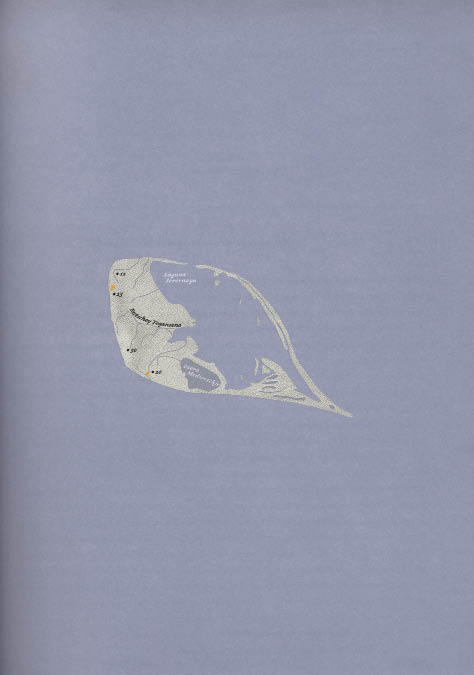It must be heaven to wake up inside the imagination of a mapmaker. No magic carpet could take you to such exotic places. Open an eye amidst the neural connections of the maker of the 14th-century Mappa Mundi, and you find yourself sharing a Jerusalem-centred earth with prowling hippogriffs and ravening anthropophagi. Stare sleepily from the frontal lobe of the compiler of Norton’s Star Atlas and you are teleported to the craters of the moon.
Judith Schalansky has chosen to incubate the minds of people who map islands. Curled up behind their eyeballs, she has let herself be carried around the globe from Lonely island in the Arctic to Deception in the Antarctic. Although she travels like Jules Verne, she describes each lonely deceptive landfall like Jorge Luis Borges.
Thus the garish hues of the Pingalop atoll are viewed through the colour-blind eyes of its inhabitants, so that the black and white pigs occupy the same chromatic range as the yellow papaya and the Pacific’s azure waves. She chooses to time-crash St Paul’s, a volcano rim in the roaring south Atlantic, stumbling ashore in 1873 with the shipwrecked crew of HMS Megaera to meet the island’s only inhabitants, two Frenchmen known as the ‘governor’ and the ‘subject’. The subject says only of his companion that he is ‘a very good man’ while the governor confines himself to the observation that the subject is ‘a thoroughly bad man’. The writing is mercurial and bewitching. Almost as good as a map.







Comments
Join the debate for just £1 a month
Be part of the conversation with other Spectator readers by getting your first three months for £3.
UNLOCK ACCESS Just £1 a monthAlready a subscriber? Log in